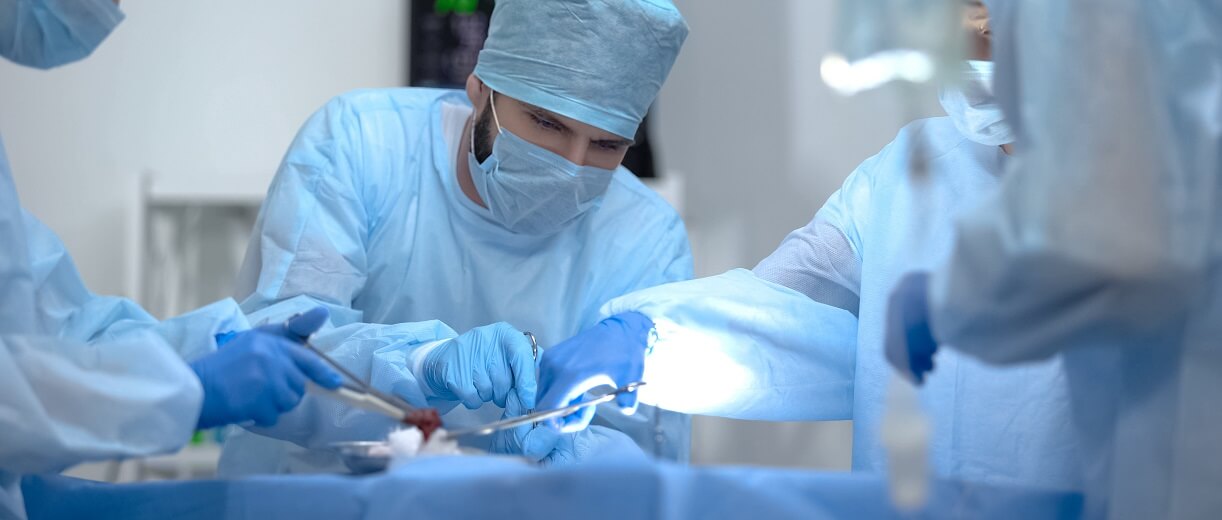A clinical evaluation of two central venous catheter stabilisation systems
Could a less invasive option for the securement of central venous catheters (CVCs) help minimise the risk of infection? The study, “A clinical evaluation of two central venous catheter stabilization systems” by Karpanen et al1 explores this topic—comparing an adhesive suture-free securement system to sutures.
Catheter securement is critical
CVCs provide reliable vascular access, thus playing a vital role in the management of acute and chronic illness.2 Their placement, an invasive procedure, may increase the risk of infectious complications. One of the key steps to minimise this risk is the right choice of vascular access securement.2
Catheter-related bloodstream infection
Movement of the catheter, both inwards and outwards relative to the skin, is referred to as catheter migration. This may facilitate the introduction of micro-organisms at the CVC insertion site, causing catheter-related bloodstream infections (CRBSIs).2 Decreasing the incidence of CRBSI is an important objective as it is a particularly costly and fatal infection. On average, CRBSIs in intensive care units cost around €8,000 to €11,000 per patient occurrence3 in Europe and are associated with an attributable mortality rate of up to 17.1% in Italy.3
Multiple options for securement devices
CVCs are still commonly secured with sutures. Other alternatives also exist such as staples, anchored devices, tissue adhesives, tape and dressings. There is a plethora of CVC dressings and securement devices for clinicians to choose from.2 With so many options available on the market, how can you be sure that you’re choosing the safest, most reliable device?
The success of a securement device can be judged on its durability, stability and reliability in achieving its intended dwell time. Attention needs to be given to how the skin is affected upon application and removal and how user-friendly the device is for clinicians to work with. To be successful, patient comfort must also be considered.4
Despite more than two decades of research and debate, there is no consensus on the optimal dressing or securement type to use with CVCs.2 However, some studies show there are microbial growth risks with sutures that adhesives do not pose.4
Sutures vs sutureless securement devices
Sutures are associated with microbial colonisation and infection.1 Their application requires multiple punctures through the skin. It moreover opens the door to needlestick injury and creates an additional wound at the insertion site. It has been demonstrated that sutures serve as a nidus for microbial growth and become heavily colonised. These micro-organisms may increase the risk of catheter-related infections (CRI) including CRBSIs.1
Research has shown adhesive securement devices to be equal to or better than sutures for stabilising catheters.4
Sutureless securement devices maximise catheter stabilisation through a large adhesive footplate and an underlying pad with a device-locking clasp. They are used with transparent dressings, and this arrangement theoretically reduces movement, kinking and flow impedance.2
Both the INS and the Centers for Disease Control (CDC) recommend the use of sutureless securement. The INS also reiterates that “sutures are associated with needlestick injuries, biofilm growth and an increased risk of infection”.4
A clinical evaluation of two central venous catheter stabilisation systems
Could a manufactured device such as adhesive securement potentially reduce the opportunity for catheter-related infection? This study evaluates a new adhesive suture-free securement system in comparison to sutures and a transparent film dressing for securing short-term CVCs.1
Patients who had a short-term CVC inserted as part of their treatment were asked for consent and were randomly provided with either sutures or the suture-free system to secure their CVC. The main outcome measures were CVC migration (daily measurement of catheter movement) and unplanned catheter removals.1
The results showed that suture-free securement for short-term CVCs performed satisfactorily as compared to sutures. This conclusion indicates that the use of suture-free securement may be a viable option to potentially reduce the microbial load around the CVC insertion site and, therefore, the risk of infectious complications.1
The authors note that, although the study was not statistically powered and further clinical evidence is required to evaluate the suture-free securement performance on a wider group of patients, this is encouraging data on alternative short-term CVC securement methods to sutures.1
What is your experience?
We would love to hear your experience as a health professional. What differences have you noticed, if any, between using sutures versus adhesive securement devices to secure your CVCs in terms of infection prevention? If you would like to have a conversation with a BD sales representative about this subject, please contact us.
References
1 Karpanen TJ, Casey AL, Whitehouse T, et al. A clinical evaluation of two central venous catheter stabilization systems. Ann Intensive Care. 2019 Apr 17;9(1):49. doi: 10.1186/s13613-019-0519-6. PMID: 30997586; PMCID: PMC6470223.
2 Ullman AJ, Cooke ML, Mitchell M, et al. Dressings and securement devices for central venous catheters (CVC). Cochrane Database Syst Rev. 2015;10(9):CD010367.
3 Tacconelli E, Smith G, Hieke K, et al. Epidemiology, medical outcomes and costs of catheter-related bloodstream infections in intensive care units of four European countries: literature-and registry-based estimates. Journal of Hospital Infection. 2009;72(2):97-103
4 Hill S, Moureau NL. Right securement, dressing, and management. In: Moureau N (eds). Vessel health and preservation: the right approach for vascular access. Cham: Springer; 2019
Approval number : BD-50057

